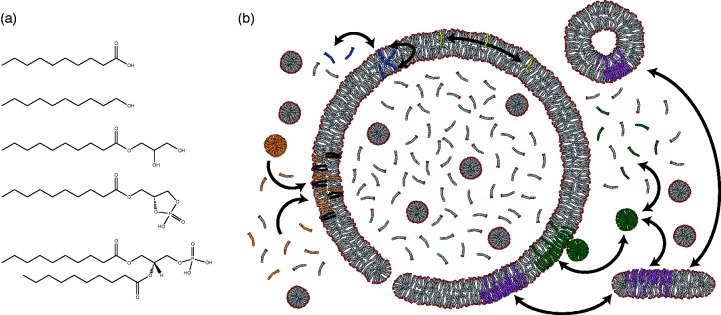Figure 2.
The lipids and lipid dynamics of protocellular membranes. (a) From top to bottom, the structures of model prebiotic lipids are decanoic acid, decanol, the glycerol monoester of decanoate, and cyclic-lyso-phosphodecanoic acid. The last structure is of di-decanoyl phosphatidic acid, shown for reference. (b) Above the critical aggregate concentration, fatty acids exist in equilibrium between free monomers, micelles (green), and various lipid aggregates (purple), including vesicles with bilayer membranes. Lipid monomers can be exchanged between different aggregate structures, flip between leaflets (blue), and laterally diffuse (yellow). The dynamic nature of the bilayer may lead to the formation of transient pores. Micelles can incorporate into pre-existing vesicles, leading to a net growth in volume and surface and surface area (green). Likewise, the presence of diacyl phospholipids (brown) leads to vesicle growth through the net accumulation of fatty acid (orange) by decreasing the desorption rate of fatty acids from the membrane.

